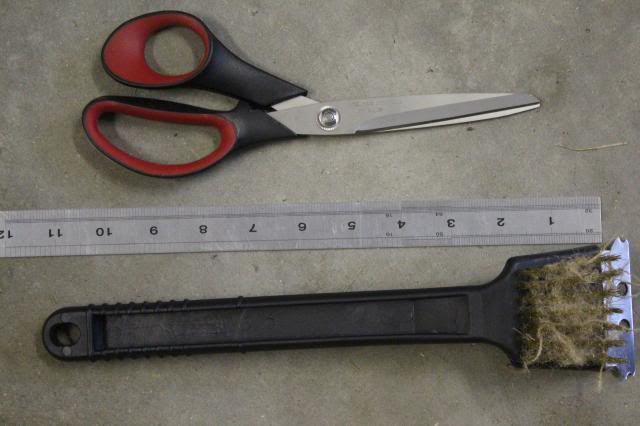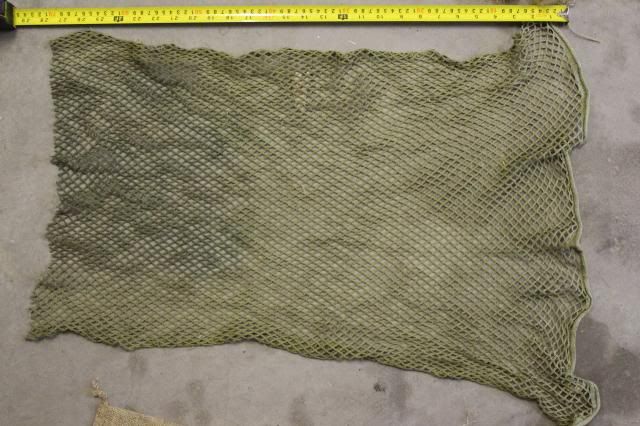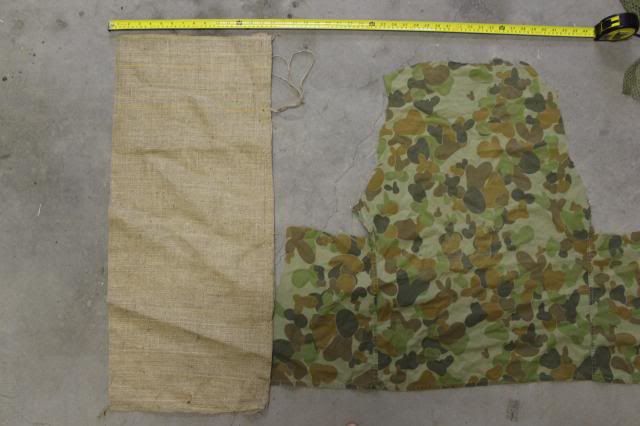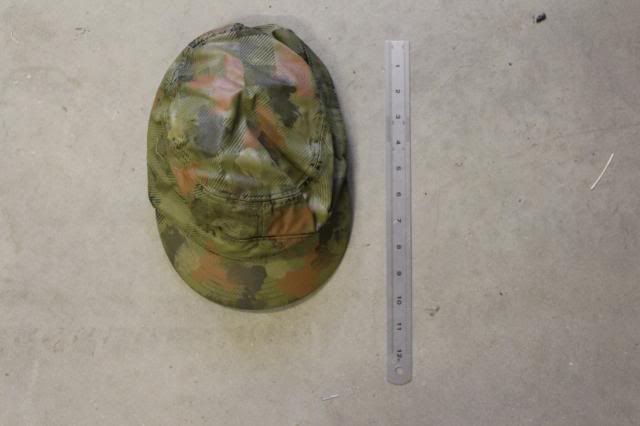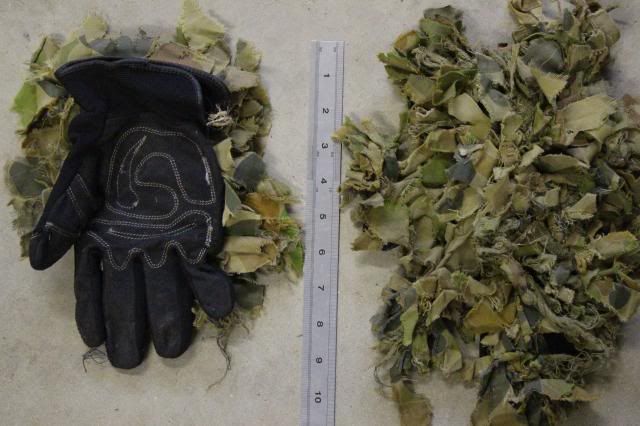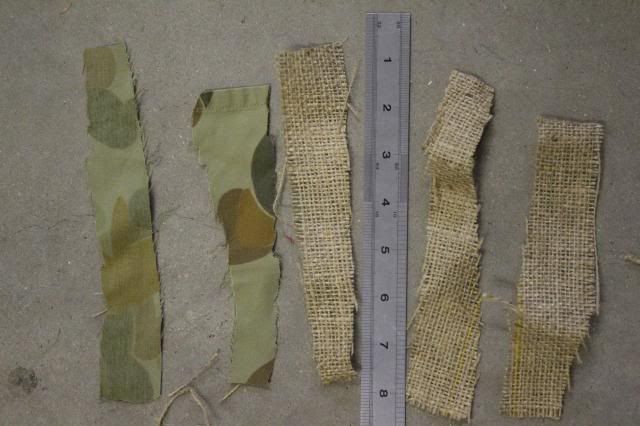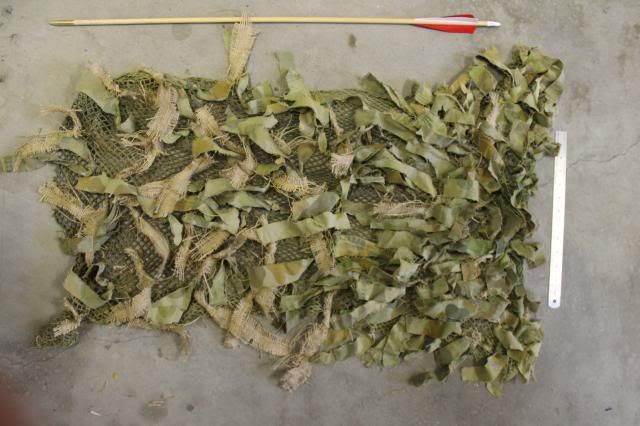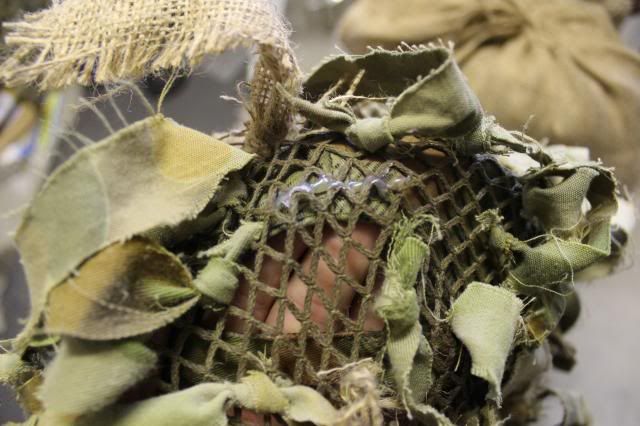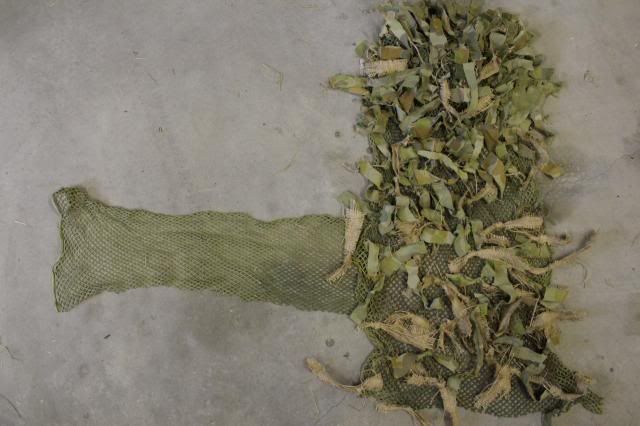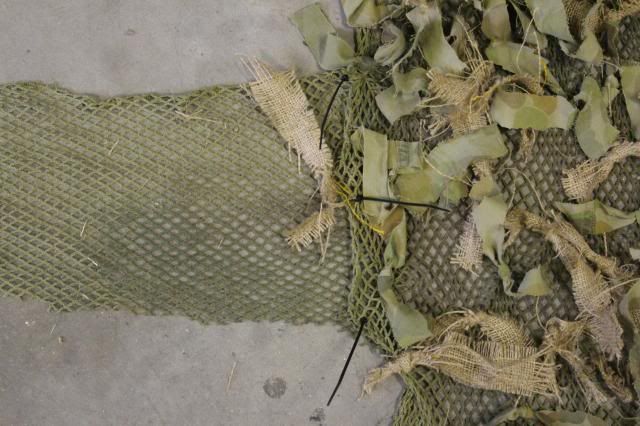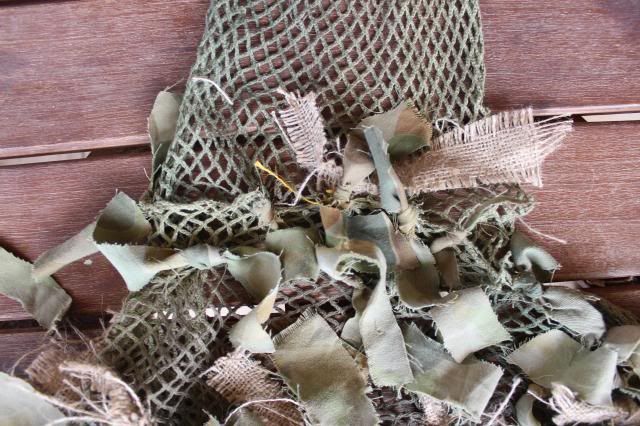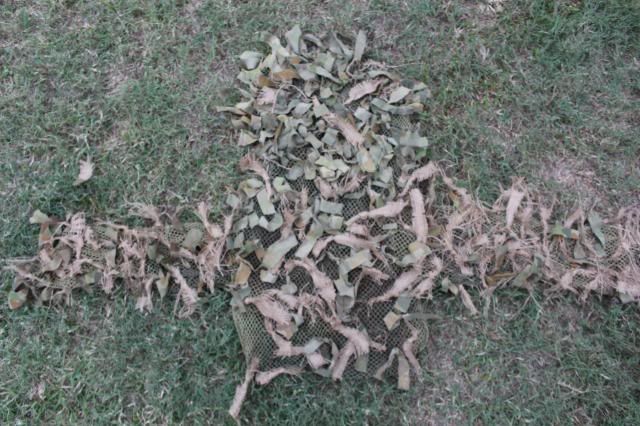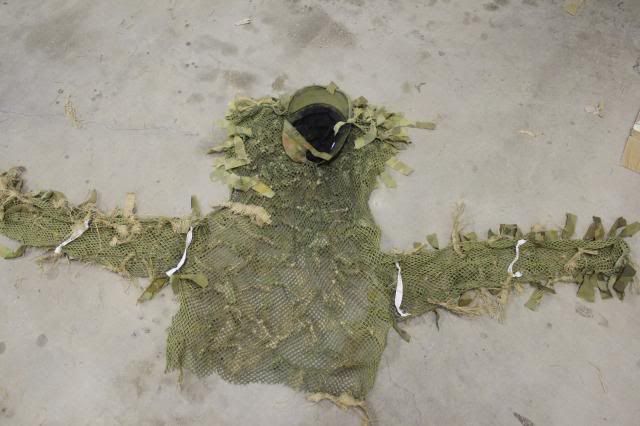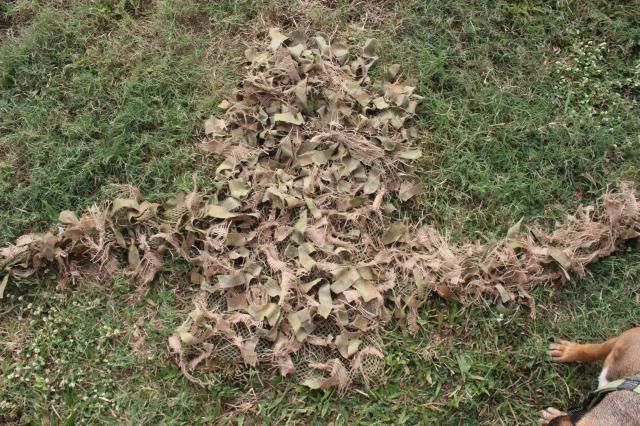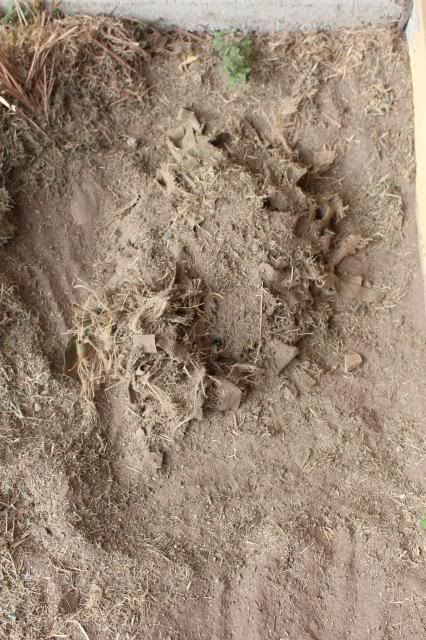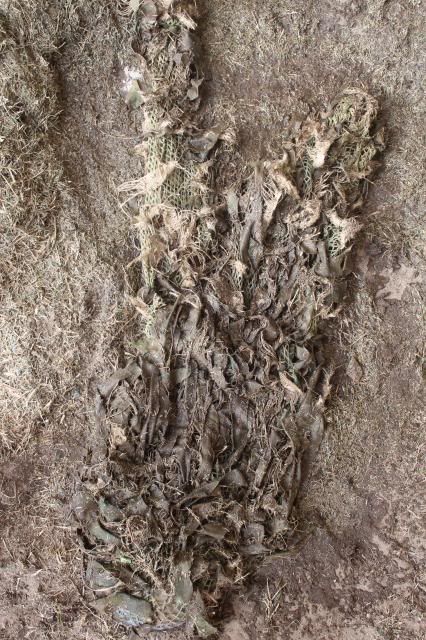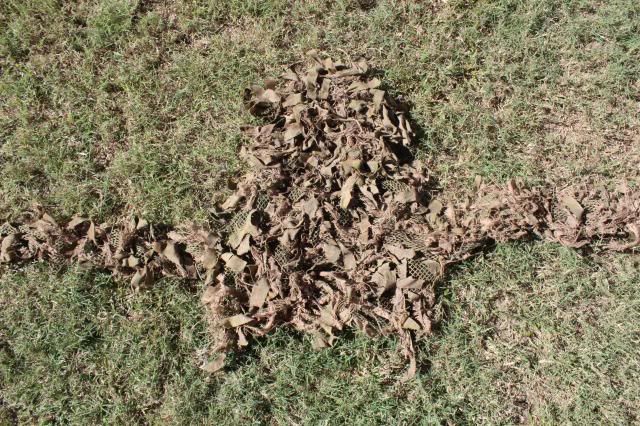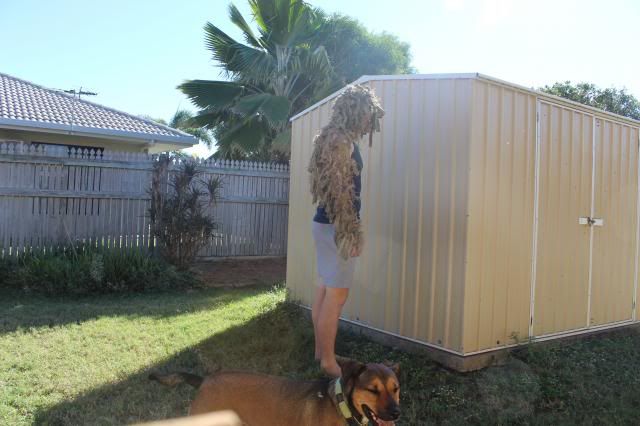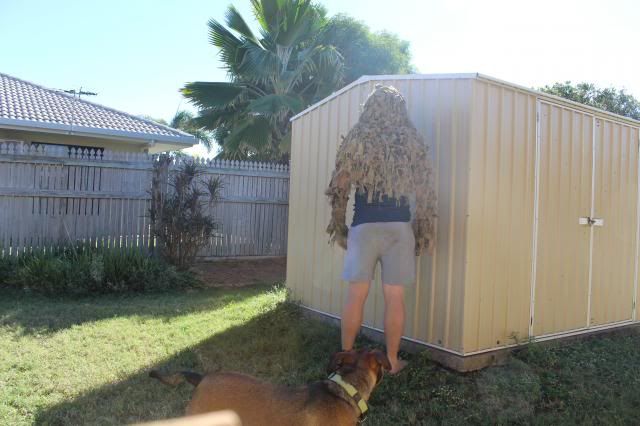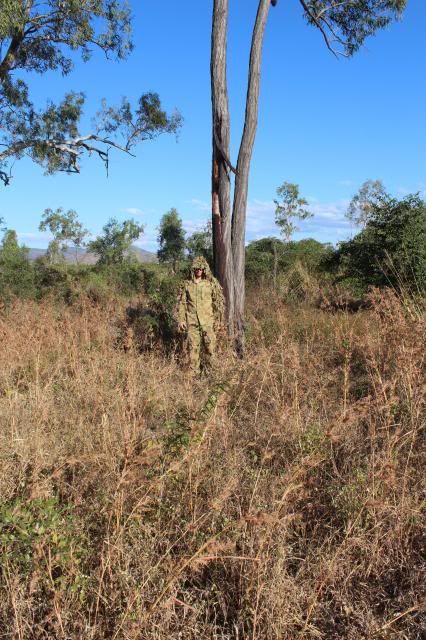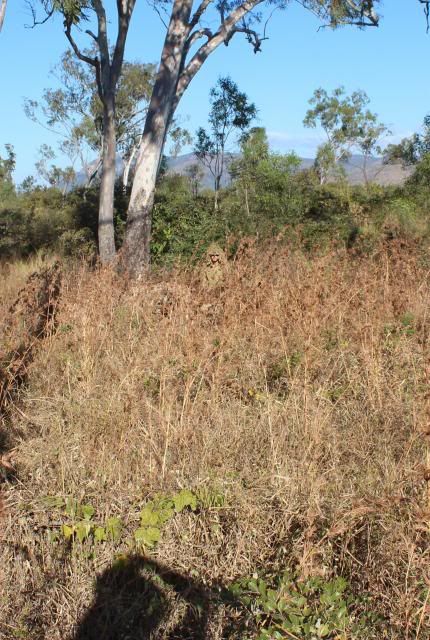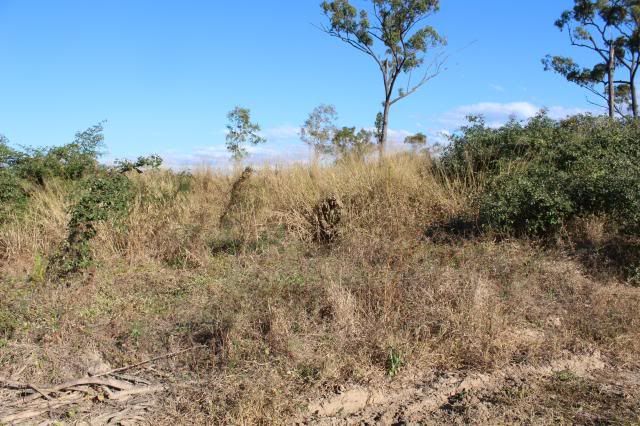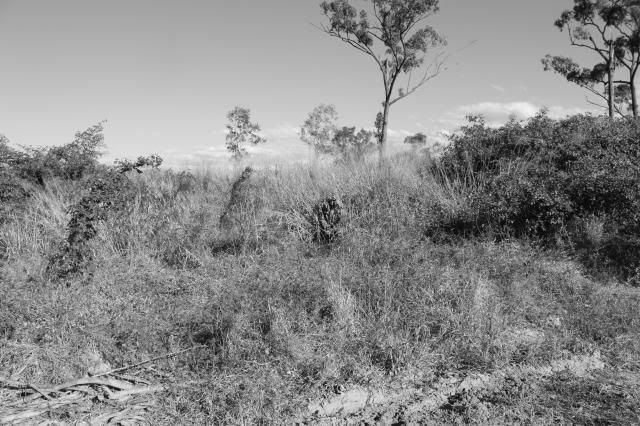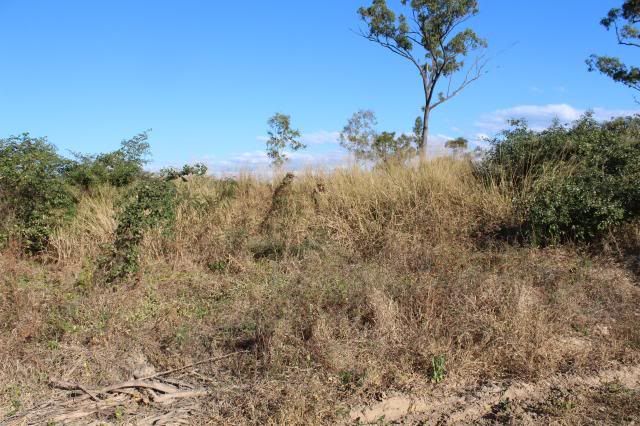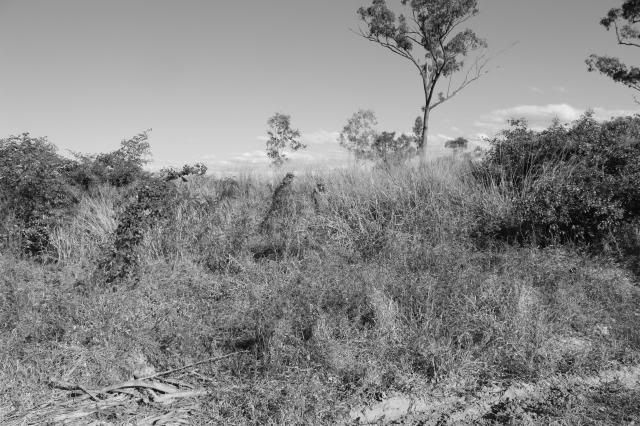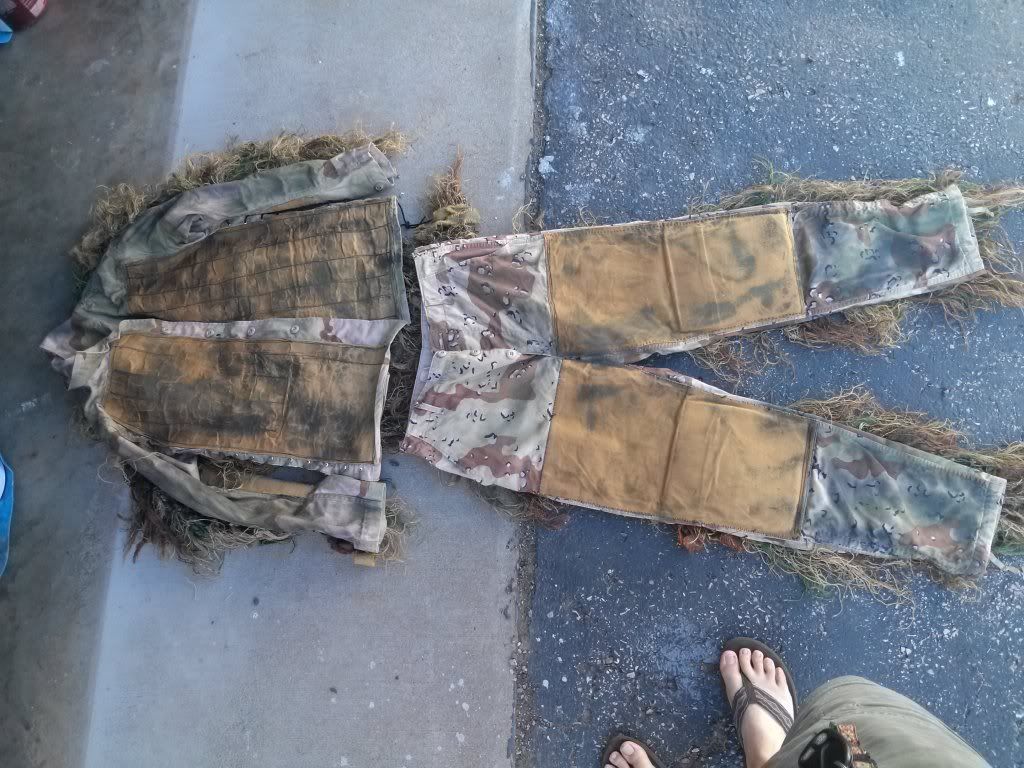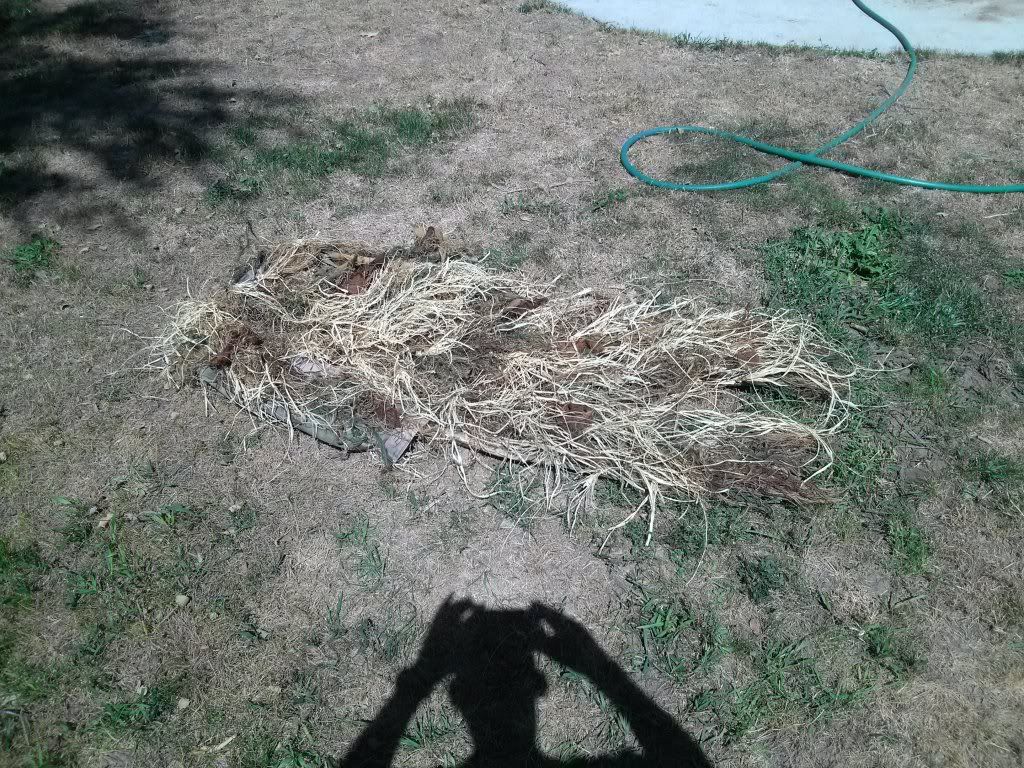Home › Forums › Campfire Forum › Gillie Head and Shoulders Build Along
-
AuthorPosts
-
-
Hi guys,
So this is motivated by both a long standing personal interest and reading Doc Ashby’s write up on his full gillie build along. All the gillies I’ve seen have been in the military and his was quite different but obviously effective.
A head and shoulders isn’t as effective as a gillie, as it leaves a lot of you bare. But it has charms as well. It is lighter, cooler and can be worn reasonably comfortably even when you’re doing a lot of walking. It leaves your chest bare which is of benefit shooting a bow and leopard crawling. If there is any kind of underbrush, you simply have to take a knee to be very effectively cammed.
My aim is to have a build along that uses scrap or cheap materials so anyone can replicate it with just a little investment of money and a slightly larger investment of time :wink:. At the end of the build I’ll get some photos of me in it in some different circumstances and in colour and black & white so we can do some assessment of the end product.
Just some additional notes before I start. I originally got the plans and instructions from a recon paratrooper in my unit. While I was working on it I got one of the snipers to come see how I was going and he suggested some changes. Rather than changing the whole thing, I’ve just introduced his ideas at the point I was at in the build. This gives a direct visual comparison between the two ideas. I’ll explain as we get there. By the end of the build I have used the snipers suggestions across the whole thing.Finally a language note, I use the abbreviation ‘cam’ the same way you use ‘cammo’. Australians are exceptionally lazy and will even abbreviate abbreviations 😀
BRIEF
This is simpler than Alcoholics Anonymous, it only takes 9 steps:
1. Cutting your material;
2. Populating your scrim;
3. Ratting your cam;
4. Gluing your scrim to your cap;
5. Aligning your shoulders;
6. Attaching your sleeves;
7. Populating your sleeves;
8. Sleeving your sleeves, and
9. Dirtying.
TOOLS:
You’ll only need a couple of things to start. A pair of decent shears and a (clean) barbecue brush. You will need a hot glue gun or sewing tools later on.
MATERIALS:
The materials I’ve used are, for me, all scraps and left overs. All of them could be got quite cheap from army surplus stores and alternatively you could use any number of appropriately shaded/textured scrap materials you may have.
The complete list:
Scrim netting – I used a single piece of 2′ x 5′
Cam materials – I used about 3 large men’s cam shirts and 2 hessian sand bags.
Cap
Gloves (optional)
Scrim netting
This piece of blank scrim I’m going to use for my sleeves, the main body part was longer. For a head and shoulders the main body should be about the length of your back, plus 1.5 feet. I stuffed up my measurements and ended up with about 3 feet for the body and 2 feet for the sleeves. My scrim is quite stretchy though and it seems to have worked out.
Cam materials
The two cam materials I have used are old cam shirts I have cut up and some surplus hessian sand bags. In both cases, worn and ratty material is better than new and shiny (all my hessian is brand new 😕 )
Cap:
The scrim, once cammed up, will be glued to the cap. This short brimmed cap was given to me by a recon guy that was going to use it for the same purpose. He had already painted it. Personally I wouldn’t paint it for this purpose. As long as it isn’t a day-glo cap, it’s going to be covered by cammed scrim anyway. I think this will just make it hotter (one of the major considerations for me).
Gloves (optional):
These are just a pair of tradesman gloves with strips of cam sewn onto the outsides. Again, these were given to me by the same recon soldier as is.
PROCESS
1. Cutting:
Cut up your cam materials into irregular strips:
I found it easier to cut up a HEAP of strips before you get started, then you can just hook into the next step.
2. Populating:
Start tying your strips onto the scrim. This is where I received differing advice. The initial advice I got was to use a dense collection of cam strips, like with the gloves. This method has some charms. It does a very good job of breaking up your shape and with a texturally uniform, shiny material like cams, the density of strips gives depth and shading. However, when the sniper saw it he said ‘that is going to be heavy and hot’. Those are two pretty big turn offs for me so I asked for his advice. He suggested using hessian as well as or instead of cams and to spread them more sparsely across the scrim. His gillie’s are very sparse, but they include little elastic bungee’s throughout so he can cut local cam and populate his suit with that. At this point I’m not worried about going to that extent. This is my main body so far:
As you can see, using the arrow as a reference, from about the nock to the front of the feathers is where I was using the recon technique, then the sniper got to me and things get sparser but with a variety of materials.
3. Ratting.
Now you take your bbq brush and start ratting up your cam strips. This is simply a matter of brushing the individual strips. You can see the process is very effective on the hessian, less so on the cams.
I found with the hessian, it is easiest and fastest to just use your fingers to separate the individual threads, then use the brush to rat the material.
4. Gluing the Cap
This is simply a matter of centring the ‘front’ of your scrim to the brim of your cap and gluing it in place. I also tagged it on the back.
Given that this is the load bearing point of the whole set up I think I’ll crack out my sew-all and really fix the scrim onto the cap securely. Alternatively you could use small zip ties, but my experience with zip ties in hats is not good.
5. Aligning your shoulders.
Throw your hat on and mark the centre of your shoulders on the scrim. A point to note here is that you need to conform the scrim to the shape of your neck and shoulders, not just let it hang from the back of the hat down to your back. If you just let it hang it can restrict your range of motion with your neck and by conforming it to your shoulders you take some of the weight load off your neck.
I’ve marked the points here with some feathers just to show you how little scrim I have hanging past my shoulders. Even though I used the length of my back as a measurement, plus an offset of 1.5 feet, due to the contouring over the cap, down my neck and across my shoulders, the scrim is only going to hang down just over my shoulder blades.
6. Attaching the sleeves.
a)Using your marked points, centre your sleeves to your main body.
I left a little excess of sleeve under the main body. I only did this because if I can get away with it I like to leave little excesses for myself as I often make measuring mistakes. A little known side effect of idiocy 😉
b)To temporarily hold the sleeves in place I zip tied them.
c)Then I used strips of cam to tie the sleeves to the main body and removed the zip ties
7. Populate the sleeves
This is the main body with sleeves attaches
I put it against some splotchy grass to do an early assessment of cam. I reckon the sleeves are looking better than the main body so I may change the main body blend later on. It’s a work in progress 😀
8. Sleeving the sleeves
So to turn the sleeves from ‘flaps’ to actual sleeves I used a piece of elastic at each armpit, a piece of elastic at each elbow and then tied the wrists with cam strips, just like a cuff link.
At the end of my build I decided the sleeves were too loose around the forearms so I added a few more ‘cufflinks’ between the wrist and elbow.
I will paint the elastic, but left them white for the pics so it was clear what was done. In the spirit of making the whole set up out of scraps, all those pieces of elastic came from one ratty old pair of jocks in my garage 😉
Note I tried it on and unsurprisingly the cam on the sleeves was considerably better than on the main body, particularly up around the head, so I will change the blend on the main body to match the sleeves for the final product.
So I just went ahead and reblended the main body. I still think it could use less cam and more hessian, but this is it now:
9. Dirtying up.
So this is more or less the final stage, beyond cam adjustments at a later date. It’s the final tip I got from the snipers, to put on your gillie and go and roll around in some dirt and mud. I didn’t feel like rolling around in the dirt, so I just let the gillie do it alone…
Then it was time for mud..
Here it is dirty and dried:
I’ll post the before and after side by side below for comparison…
Note: I tried it on after it dried just to shoot some arrows and see how it goes. Points from that:
1. Range of motion was fine.
2. The suit did not interfere with my shot in any way EXCEPT the little hat brim. Even this short brim stopped me from getting to my anchor. Not by a lot but it did.
3. My back and shoulders are quite wide and the netting was pulled pretty tight across them. This made the sparse layer I had on that part inadequate. So I’ll have to add a heap more cam and hessian strips to that area.
Testing
I filled in more of the back section with hessian and cam strips. I also joined the sleeves from the wrist cuff to the elbow elastic with more strips of cam as it all hung a bit loose on the forearms.
I took some pics in the yard just to give an idea of effects. It’s looking pretty good to me now.
Later in the week I will get some pics, dressed properly and in the scrub.
Ok, so I got all these photos in a ‘worst case’ scenario of facing into an mid afternoon sun and square on, just so you don’t get any false impressions as to the effects.
This first pic is demonstrate how useless a H&S is if you are caught standing without a front screen.
The next series shows how a little front screen makes a big difference with H&S. Note how much a face stands out, particularly reflecting direct sunlight (from 20m).
This is kneeling with even less front screen but a well matched back screen (from 10m).
And finally with a pretty substantial front screen and matching back screen (from 15m).
As you can see the H&S is no substitute for a full gillie, but it is a workable compromise.
Hope I haven’t been wasting your time 😉
Jim
PS
feel free to ask any questions for clarifications, etcetera.
-
Jim,
Great job! I am on my 5th generation of ghillie myself. I keep changing things every year. I started out thick and heavy but have also gone sparse and light. I use 1 inch netting as the base with synthetic jute pieces, wool yarn (thanks Dr. Ashby) and wider strips of fabric (mimic leaves). I use a 3d leafy ASAT jacket which is light and breathable and attach the ghillie to it with large black safety pins. I used to have the hood separate from the back and shoulder piece but this time I kept it one large piece and it seemed to help with weight distribution. I put elastic in the hood portion to make a type of headband to keep it in place on my head. I also wear an ASAT face mask loosely under the hood and also add face paint. I will also add native veggies when I start the season. It is not perfect but it is coming along for my uses. Now that Jim has given me a couple ideas looks like a 6th generation maybe in the works…oh bother!!! the pic is of gen 4 but very similar to 5!
-
Very cool. The burlap material really makes it disappear. We want to see some Arnold-type Predator shots when you’re done.:lol:
-
Brennan, yours looks really good mate. Jute is awesome and used extensively by every sniper I know. That stuff just disappears, especially in long grass. Any chance we could see a pic of the elastic headband you’ve got in there? I was thinking I’d use of those open headed tennis style visors for this but then my mate gave me this hat, so I saved myself ten bucks 😉
Ralph, haha, that arrow probably still shoots straighter than me 😀 You never know with monster hogs do you. Even with tricks of perspective that’s a big pig!
I’ll finish up my suit and get some pics in the field soon 😉
-
ausjim wrote: I’ll post the before and after side by side below for comparison…
This hasn’t come out perfect as decent cloud cover blew away leaving shining sun for the after shot, with all the reflective and shadowing differences associated…
Before dirt
After dirt
It has actually made quite a difference, as promised. It all just looks quite aged now. It stinks like dirt too.
-
Jim,
I like the dirt addition!!! I will get a pic of the hood with the elastic for posted asap!
-
Jim, it looks good, blends right in.
R2, that’s one big pig, awesome.
-
-
Cheers for that Brennan. Looks good. I love seeing different solutions for the same problem 😀
-
-
Jans that’s neat mate. I’m sure what you’ve added to it would make you disappear in long grass. Is that ‘stalk grass’ you’ve used? I’ve never seen a full suit with a completely bare front like that. Obviously good for belly crawling through the grass though!
Jim
-
Jim, Yeah its some type of fake grass I got from another one of the snipers I work with. The chest and knees are bare for just that, stalking low on your belly. Makes sense really as any material there would just rub off anyway. Seems to do the job as I stay real low anyway until I am within range to shoot, then I raise up for the shot. I like the bare chest and inside of the arms as there isn’t anything to snag my string. I used a camo bush had last season and just cut and stuffed natural materials in the loops around the brim for cover, but want to make more of a hood. I really like your design buddy! Light, very packable, covers what needs to be covered, and way cooler to wear. It gets into the 90s out here on the prairies during early antelope season in September and I sweat like a pig in this get up! Something lighter and cooler would be great. what are you going to use yours for? What type of hunting? Spot and stalk roo hunting? Hogs, dingos?:)
J
-
I guess the bulk of my hunting has been spot and stalk. I like walking around. I’ve never put effort into camouflage for hunting(I get the impression animals are a lot less wary here, for obvious reasons), I just like to wear comfortable, breathable clothes. We’re not allowed to hunt roos, although people do. Heaps of pigs up here, but I’m hoping to get into some wild dogs this year and I’ll use it for that. The only way I’ve heard of guys getting dogs besides baiting is to howl them in. Which means basically you’re hunting from some kind of blind, which means I could just wear a full gillie, which kind of defeats the benefits of a head and shoulders, but I’ll still give it a go 🙂
I did talk to a guy recently who shot a dingo with trad gear while hunting pigs on the ground, but he said he stumbled across it while it was making a meal of a carcass. He was just in the right place at the right time.
Incidentally the legal distinction between a wild dog (fair game) and a dingo (protected species) is that if a canine is on private property, it is a wild dog.
Jans have you ever taken an antelope with trad gear? I only know a little about them but they sound like they’d be seriously challenging.
-
Jim, Speed goats are the most difficult big game I have hunted with any bow, much less trad gear! I’ve only ever shot one, back in my teen years, with an old compound, before I understood trad and how I wanted to hunt. I only got that one by luck anyway. I have hunted them the past 3 years now with trad gear and haven’t even had a shot. In my defense, Antelope numbers have been dropping drastically here in western South Dakota over the past few years and the numbers just aren’t there. My brother and I spent a full 3 day weekend two falls ago driving all over hill and dale, 300 plus miles, and only had one situation which we stalked. I think we only saw about two dozen goats the whole weekend, and in country where there used to be hundreds. On top of the low numbers, the American Antelope is an amazing creature. They are only the size of a large dog with long skinny legs, have eyes as big as a silver dollar and can see in 10 power eye sight. They like to stand and wait out in the middle of the prairie or fields. They will stand on top of the high point in the middle (and this will be only a slight rise in elevation). There usually is no cover to hide behind to do a stalk. That leaves a guy with trying to ambush them at watering holes, or sitting in ground blinds. Out here we try to find them in or near the prairie and the badlands were there are some draws and ravines for cover. They can also be decoyed in during their rut. The bucks become very territorial during the rut and will charge a small antelope buck decoy to within shooting distance (sometimes that means 10 yards, sometimes that means 70 yards;)
Last fall I found a nice area with two very nice bucks fighting over a group of 5 does. I used ridges and cover to hopscotch with them as they grazed north. I was down wind and never skylined myself as I would belly crawl up to the ridge to check where they were, then go back down and move along the opposite side of the ridge. Each time I thought I was going to be at a point to intercept them, a doe would wander up and over the ridge and bust me. Then they would run away (and when they do, it is for miles). Ah yes, Antelope hunting:) You should come and try it. In fact, it sounds like you should pack up your kit and come on over the dam for a little stick and string adventure anyway. We have lots of good hunting and you are welcome to visit her in western South Dakota. We would just have to eat lots of venison before you go back if you shoot something:)
J
-
jpcarlson wrote: We have lots of good hunting and you are welcome to visit her in western South Dakota.
Those are words you are going to live to regret my friend 😀 American antelope sounds like just the kind of impossible challenge that a man can’t turn down.
Jim.
-
OK, Jim and Brennan– What is it that would make otherwise normal (I am assuming) men want to wear long women’s wigs and flaunt them in public/online. Well, while you guys are cute, I much prefer flaming redheads! :P:lol:

-
Dave,
If I was able to grow flowing locks of hair I would…but I suffer as you in the hair department! 😆 Plus when those deer stop to laugh it gives me the time I need to loose!
-
Well Dave, if I ever want to photograph you in your natural habitat I know what to use as a decoy 😉 But if you think my H&S’s is what a woman’s head looks like, I think you’ve been in the hills too long mate 😀
-
ausjim wrote: [quote=jpcarlson]We have lots of good hunting and you are welcome to visit her in western South Dakota.
Those are words you are going to live to regret my friend 😀 American antelope sounds like just the kind of impossible challenge that a man can’t turn down.
Jim.
No worries buddy, just give it a few years before you invest in the tickets if you plan to hunt here in SD to allow the goats to come back to better numbers! That will also give me time for a few things; 1st, I will have more access and better spots to hunt, 2nd I will get my 16 month old twin daughters a bit more grown up and it will be much easier to get the blessing from the wife to take off galvanting on the prairies for the hunt;) We have really good white tail and mule deer hunting here as well. You can also apply for an elk license here in our Black Hills. There are good numbers and they don’t get much pressure as it is a draw only tag. What in the heck would we do with all of your meat:)? I guess we could figure that one out later.
Jans
-
-
AuthorPosts
- You must be logged in to reply to this topic.


